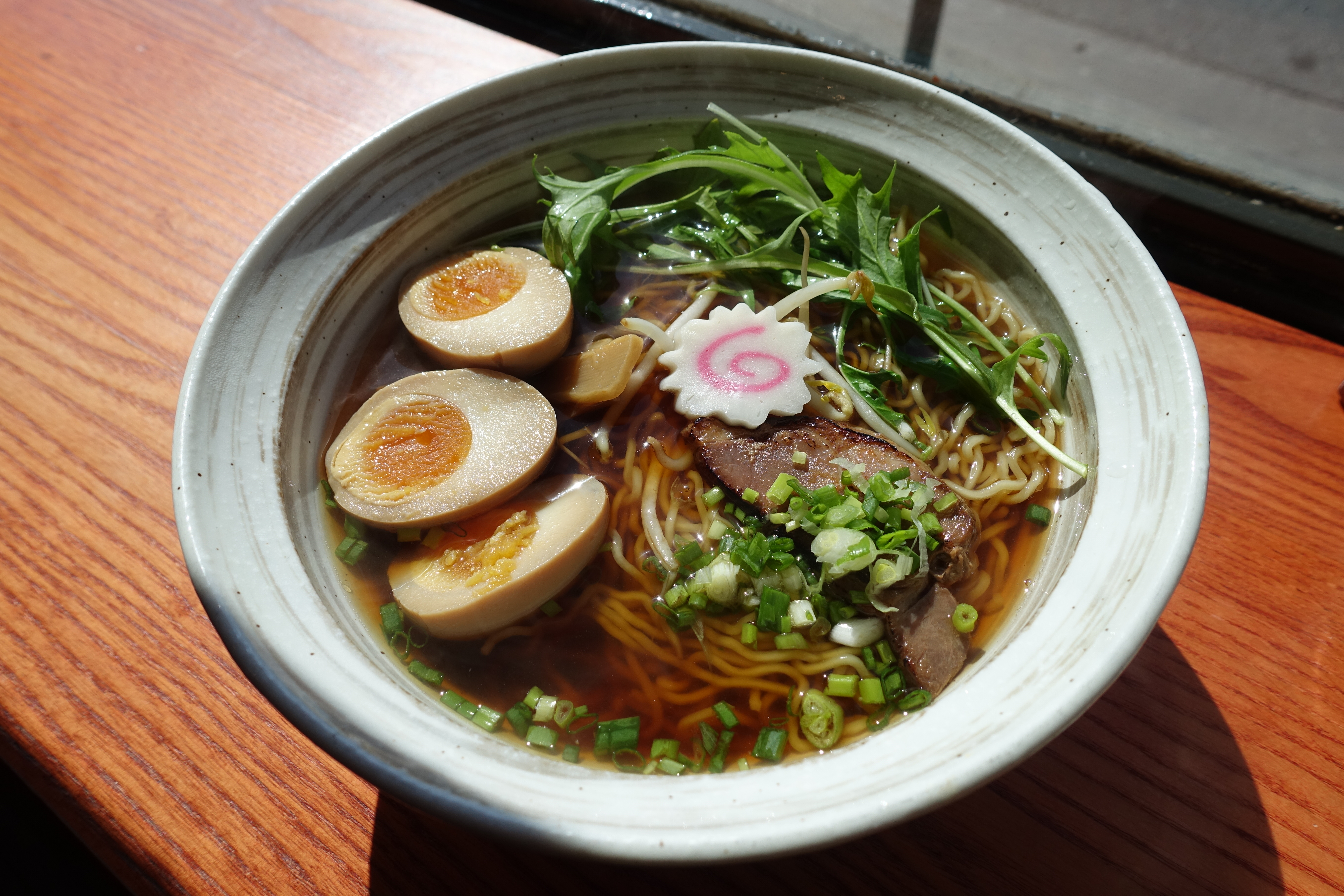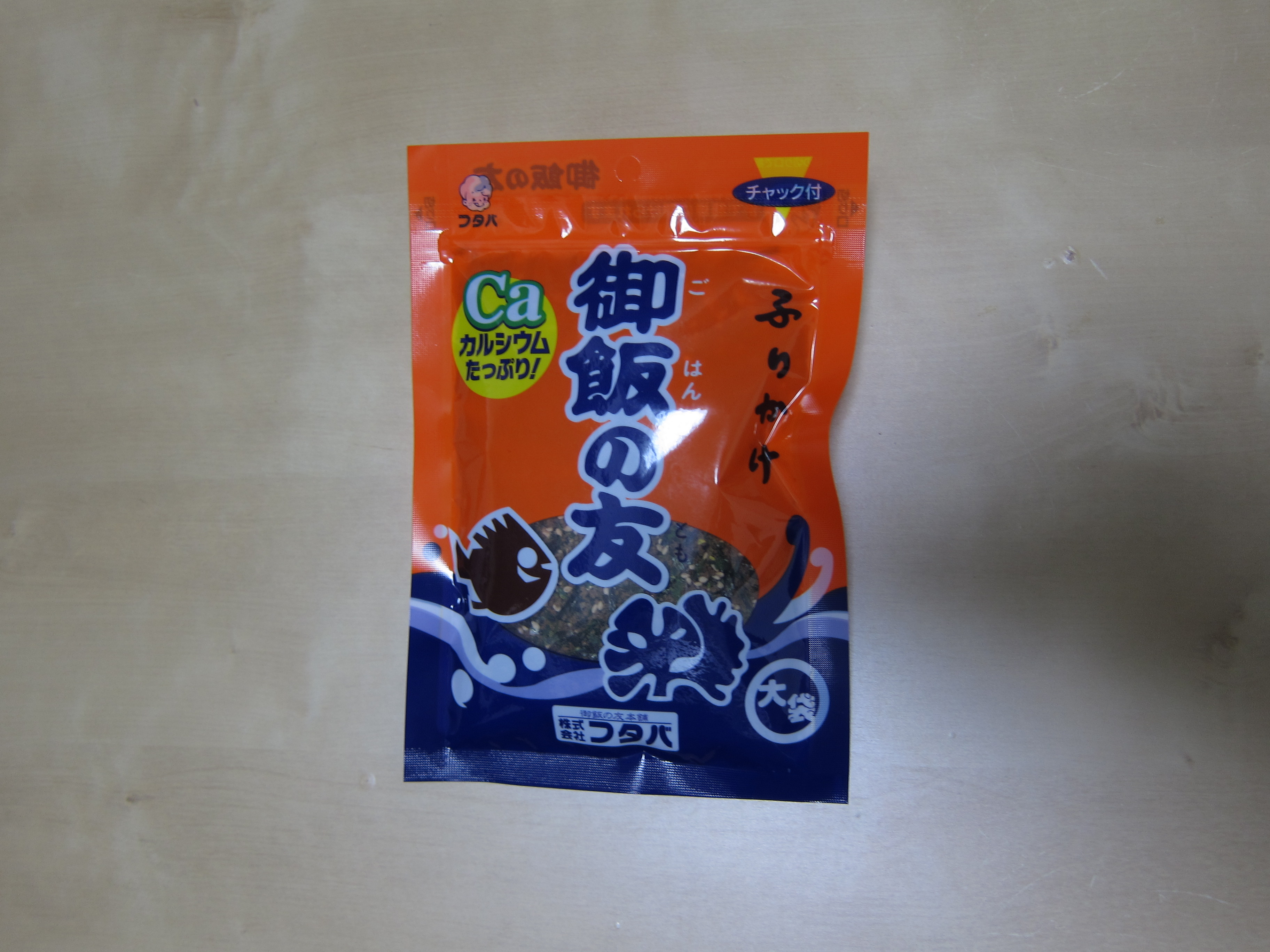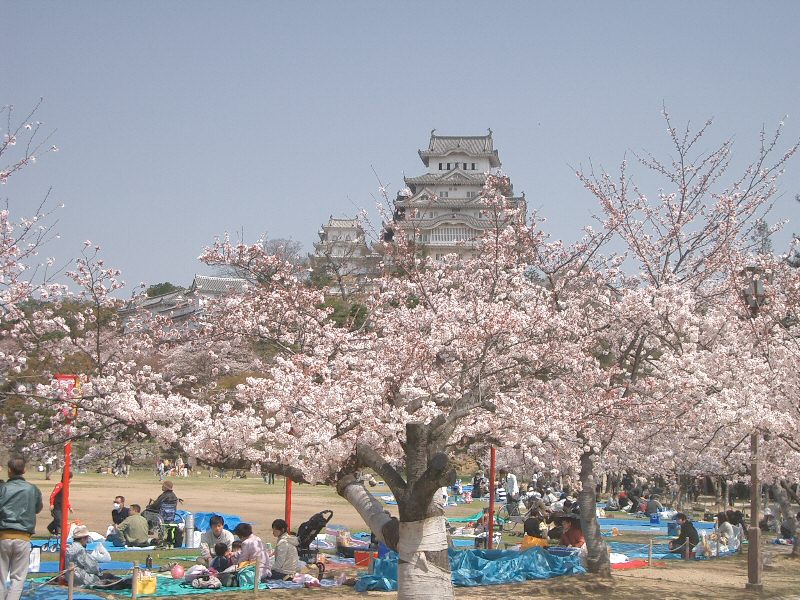|
Norimaki
''Norimaki'' (海苔巻) are various Japanese dishes wrapped with nori seaweed, most commonly a kind of sushi, ''makizushi'' (巻き寿司). Other than ''makizushi'', ''onigiri'' (おにぎり, rice balls), ''sashimi'', ''senbei'' (煎餅, rice crackers), and ''chikuwa'' (竹輪, bamboo ring) are also regarded as ''norimaki'' if they are wrapped with seaweed. Description ''Makizushi'' ''Makizushi'' (, "rolled sushi") was first described in the 1750 publication "Ryori SanKaigo" as makizushi (). In the 1787 publication "Shichigokobi", it was mentioned as being on the menus of sushi restaurants in Edo as sushi that does not stain the hands. In the early days of ''makizushi'', there were many other types of sushi rolled in other than seaweed, such as those rolled in thinly roasted eggs, or those rolled in shallow seaweed, wakame seaweed, or bamboo bark and so on. In Tokyo, there exists ''kampyo-maki'' (干瓢巻, dried gourd rolls) made in the Edo period. The combination of ''i ... [...More Info...] [...Related Items...] OR: [Wikipedia] [Google] [Baidu] |
Senbei
, also spelled ''sembei'', is a type of Japanese rice cracker. They come in various shapes, sizes, and flavors, usually savory but sometimes sweet. Senbei are often eaten with green tea as a casual snack and offered to visiting house guests as a courtesy refreshment. There are several types of traditional Japanese ''senbei''. They can be baked or deep-fried and sometimes sweetened. Aside from rice, wheat flour or starch can be used. Some varieties even use foods other than grains, such as ''sakana senbei'' (fish-senbei), ''renkon senbei'' (lotus root senbei) and ''hone senbei'' (bone-senbei). ''Senbei'' have several variations, including ''nori''-wrapped, '' arare'', '' Olive no Hana'', soy nut, and wet. Thin rice crackers (薄焼きせんべい ''usuyaki senbei'') are popular in Australia and other countries. In China, the same characters used to write ''senbei'' are read jiānbǐng ( zh, t=, s=煎饼, p=jiānbǐng, labels=no); the term instead refers to a crepe and is m ... [...More Info...] [...Related Items...] OR: [Wikipedia] [Google] [Baidu] |
Onigiri 001
, also known as or , is a Japanese rice ball made from white rice. It is usually formed into triangular or cylindrical shapes, and wrapped in ''nori'' (seaweed). Onigiri traditionally have sour or salty fillings such as ''umeboshi'' (pickled Chinese plum), salted salmon, ''katsuobushi'' (smoked and fermented bonito), kombu, ''tarako'' or ''mentaiko'' (pollock roe), or ''takanazuke'' (pickled Japanese giant red mustard greens). Because it is easily portable and eaten by hand, onigiri has been used as portable food or bento from ancient times to the present day. Originally, it was used as a way to use and store left-over rice, but it later became a regular meal. Many Japanese convenience stores and supermarkets stock onigiri with various fillings and flavors. It has become so mainstream that it is even served in izakayas and sit-down restaurants. There are even specialized shops which only sell onigiri to take out. Due to the popularity of this trend in Japan, onigiri has becom ... [...More Info...] [...Related Items...] OR: [Wikipedia] [Google] [Baidu] |
Senbei 003
, also spelled ''sembei'', is a type of Japanese rice cracker. They come in various shapes, sizes, and flavors, usually savory but sometimes sweet. Senbei are often eaten with green tea as a casual snack and offered to visiting house guests as a courtesy refreshment. There are several types of traditional Japanese ''senbei''. They can be baked or deep-fried and sometimes sweetened. Aside from rice, wheat flour or starch can be used. Some varieties even use foods other than grains, such as ''sakana senbei'' (fish-senbei), ''renkon senbei'' (lotus root senbei) and ''hone senbei'' (bone-senbei). ''Senbei'' have several variations, including ''nori''-wrapped, '' arare'', ''Olive no Hana'', soy nut, and wet. Thin rice crackers (薄焼きせんべい ''usuyaki senbei'') are popular in Australia and other countries. In China, the same characters used to write ''senbei'' are read jiānbǐng ( zh, t=, s=煎饼, p=jiānbǐng, labels=no); the term instead refers to a crepe and is more ... [...More Info...] [...Related Items...] OR: [Wikipedia] [Google] [Baidu] |
Onigiri
, also known as or , is a Japanese cuisine, Japanese rice ball made from white rice. It is usually formed into triangular or cylindrical shapes, and wrapped in ''nori'' (seaweed). Onigiri traditionally have sour or salty fillings such as ''umeboshi'' (pickled Prunus mume, Chinese plum), salted salmon as food, salmon, ''katsuobushi'' (smoked and fermented bonito), kombu, ''tarako'' or ''mentaiko'' (pollock roe), or ''takanazuke'' (pickled brassica juncea, Japanese giant red mustard greens). Because it is easily portable and eaten by hand, onigiri has been used as portable food or bento from ancient times to the present day. Originally, it was used as a way to use and store left-over rice, but it later became a regular meal. Many Japanese convenience stores and supermarkets stock onigiri with various fillings and flavors. It has become so mainstream that it is even served in izakayas and sit-down restaurants. There are even specialized shops which only sell onigiri to Take-out, t ... [...More Info...] [...Related Items...] OR: [Wikipedia] [Google] [Baidu] |
Makizushi2
is a traditional Japanese dish made with , typically seasoned with sugar and salt, and combined with a variety of , such as seafood, vegetables, or meat: raw seafood is the most common, although some may be cooked. While sushi comes in numerous styles and presentation, the current defining component is the vinegared rice, also known as , or . The modern form of sushi is believed to have been created by Hanaya Yohei, who invented nigiri-zushi, the most commonly recognized type today, in which seafood is placed on hand-pressed vinegared rice. This innovation occurred around 1824 in the Edo period (1603–1867). It was the fast food of the ''chōnin'' class in the Edo period. Sushi is traditionally made with medium-grain white rice, although it can also be prepared with brown rice or short-grain rice. It is commonly prepared with seafood, such as squid, eel, yellowtail, salmon, tuna or imitation crab meat. Certain types of sushi are vegetarian. It is often served with , wa ... [...More Info...] [...Related Items...] OR: [Wikipedia] [Google] [Baidu] |
Batter (cooking)
Batter is a flour mixture with liquid and other ingredients such as sugar, salt, egg, milk and leavening agent, leavening used for cooking. Batters are a pourable consistency that cannot be kneaded. Batter is most often used for cake, pancakes and as a coating for fried foods. It is also used for a variety of batter breads. The word ''batter'' comes from the French word ''battre'', which means ''to beat'', as many batters require vigorous beating or whisking in their preparation. Methods Many batters are made by combining dry flours, flour with liquids such as water, milk, or egg as food, eggs. Batters can also be made by soaking grains in water and grinding them wet. Often a leavening agent such as baking powder is included to aerate and fluff up the batter as it cooks, or the mixture may be naturally Fermentation (food), fermented for this purpose as well as to add flavour. Carbonated water or another carbonated liquid such as beer may instead be used to aerate the batter i ... [...More Info...] [...Related Items...] OR: [Wikipedia] [Google] [Baidu] |
Soy Sauce
Soy sauce (sometimes called soya sauce in British English) is a liquid condiment of China, Chinese origin, traditionally made from a fermentation (food), fermented paste of soybeans, roasted cereal, grain, brine, and ''Aspergillus oryzae'' or ''Aspergillus sojae'' Mold (fungus), molds. It is recognized for its saltiness and pronounced umami taste. Soy sauce was created in its current form about 2,200 years ago during the Western Han dynasty of ancient China. Since then, it has become an important ingredient in List of Asian cuisines, East and Cuisine of Southeast Asia, Southeast Asian cooking as well as a condiment worldwide. Use and storage Soy sauce can be added directly to food, and is used as a dip or Salt#Edible salt, salt flavor in cooking. It is often eaten with rice, Japanese noodles, noodles, and sushi or sashimi, or can also be mixed with ground wasabi for dipping. Bottles of soy sauce for the salty seasoning of various foods are common on restaurant tables in many co ... [...More Info...] [...Related Items...] OR: [Wikipedia] [Google] [Baidu] |
Mirin
is a type of rice wine and a common ingredient in Japanese cuisine, Japanese cooking. It is similar to sake but with a lower alcohol (drug), alcohol content and higher sugar content. The sugar content is a complex carbohydrate that forms naturally during the fermentation process; no sugars are added. The alcohol content is further lowered when the liquid is heated. Types Three types of products are marketed as ''mirin''. The first is ''hon mirin'' (literally: true mirin), which contains about 14% alcohol and is produced by a 40-to-60-day mashing (saccharification) process. The second is ''shio mirin'' (literally: salt mirin), which contains a minimum of 1.5% salt to prevent consumption in order to avoid alcohol tax. The third are ''mirin''-like seasonings called ''shin mirin'' (literally: new mirin), or ''mirin-fu chomiryo'' (literally: mirin-like seasoning), which are substitutes not actually ''mirin''. They are blends of sweetener glucose syrup, syrups, flavorings such as K� ... [...More Info...] [...Related Items...] OR: [Wikipedia] [Google] [Baidu] |
Wasabi
Wasabi (Japanese language, Japanese: , , or , ) or Japanese horseradish (''Eutrema japonicum'' syn. ''Wasabia japonica'') is a plant of the family Brassicaceae, which also includes horseradish and Mustard plant, mustard in other genus, genera. The plant is Native species, native to Japan, the Russian Far East including Sakhalin, and the Korea, Korean Peninsula. It grows naturally along stream beds in mountain river valleys in Japan. Wasabi is grown for its rhizomes, which are ground into a paste as a Pungency, pungent condiment for sushi and other foods. It is similar in taste to hot mustard or horseradish rather than Chili pepper, chilli peppers, in that it stimulates the nose more than the tongue, but freshly grated wasabi has a subtly distinct flavour. The main cultivars in the marketplace are ''E. japonicum'' 'Daruma' and 'Mazuma', but there are many others. The oldest record of wasabi as a food dates to the 8th century AD. The popularity of wasabi in English-speaking count ... [...More Info...] [...Related Items...] OR: [Wikipedia] [Google] [Baidu] |
Furikake
is a dry Japanese condiment sprinkled on top of cooked rice, vegetables, and fish, or used as an ingredient in . It typically consists of a mixture of dried fish, sesame seeds, dried seaweed flakes, sugar, salt, and monosodium glutamate. Other ingredients, such as (sometimes indicated on the package as bonito), ( bonito flakes moistened with soy sauce and dried again), freeze-dried salmon particles, , egg, powdered miso, or vegetables, are often added. is often brightly colored and flaky. It can have a slight fish or seafood flavoring and may be spicy or sweet. It can be used in Japanese cooking for pickling and for rice balls (). Overview The Japan Furikake Association defines ''furikake'' as "seasoned and dried one or more kinds of marine products, agricultural products, livestock products, etc., and mixed with seaweed, sesame seeds, seasonings, and others. Its main use is sprinkled (in Japanese: ''furikake'') on rice and other foods."農文協(編)『地域� ... [...More Info...] [...Related Items...] OR: [Wikipedia] [Google] [Baidu] |
Tuna
A tuna (: tunas or tuna) is a saltwater fish that belongs to the tribe Thunnini, a subgrouping of the Scombridae ( mackerel) family. The Thunnini comprise 15 species across five genera, the sizes of which vary greatly, ranging from the bullet tuna (max length: , weight: ) up to the Atlantic bluefin tuna (max length: , weight: ), which averages and is believed to live up to 50 years. Tuna, opah, and mackerel sharks are the only species of fish that can maintain a body temperature higher than that of the surrounding water. An active and agile predator, the tuna has a sleek, streamlined body, and is among the fastest-swimming pelagic fish—the yellowfin tuna, for example, is capable of speeds of up to . Greatly inflated speeds can be found in early scientific reports and are still widely reported in the popular literature. Found in warm seas, the tuna is commercially fished extensively as a food fish, and is popular as a bluewater game fish. As a result of overfishi ... [...More Info...] [...Related Items...] OR: [Wikipedia] [Google] [Baidu] |
Hanami
is the Japanese traditional custom of enjoying the transient beauty of flowers; in this case almost always mean those of the or, less frequently, trees. From the end of March to early May, cherry trees bloom all over Japan, and around the second week of January on the island of Okinawa. The is announced each year by the Japan Meteorological Agency and watched carefully by those planning ''hanami,'' as the blossoms only last a week or two. In modern-day Japan, ''hanami'' mostly consists of having an outdoor party beneath the sakura during daytime or at night. In some contexts the Sino-Japanese term is used instead, particularly for festivals. ''Hanami'' at night is called . In many places such as Ueno Park temporary paper lanterns are hung for the purpose of ''yozakura''. On the island of Okinawa, decorative electric lanterns are hung in the trees for evening enjoyment, such as on the trees ascending Mt. Yae, near Motobu Town, or at the Nakijin Castle. A more ancient f ... [...More Info...] [...Related Items...] OR: [Wikipedia] [Google] [Baidu] |











